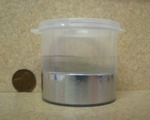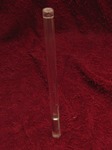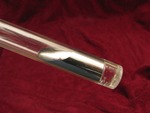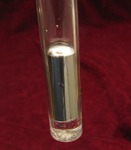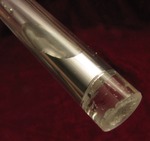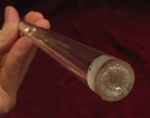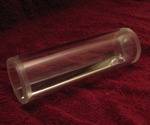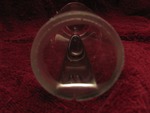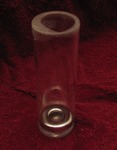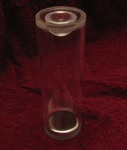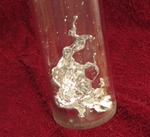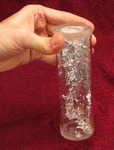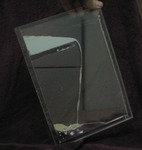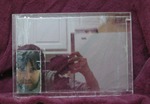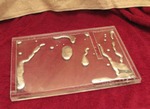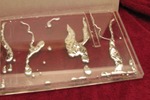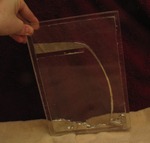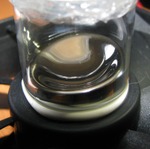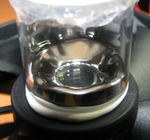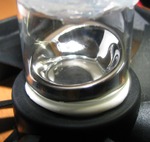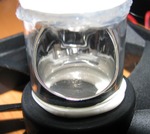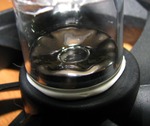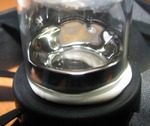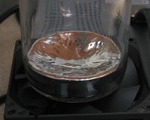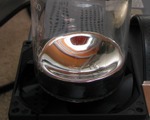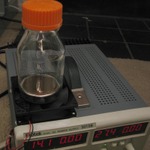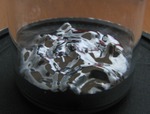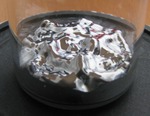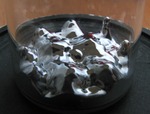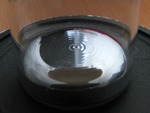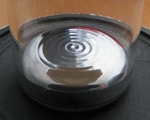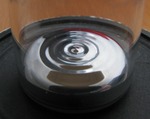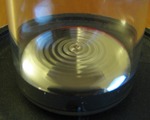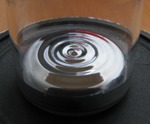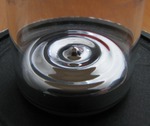Playing with Mercury
Elemental mercury is a neurotoxin that causes nerve damage, hair loss and eventually death if you are exposed to enough of it. It is not absorbed through the skin or digestion, but only through inhaling it. It naturally evaporates so you must be careful not to be exposed to the fumes. It takes about three to six months for the mercury to work it's way out of your body, so it's easy to have it build up by being exposed to small amounts for long periods. The stuff splashes into microscopic droplets and is nearly impossible to clean up, so it has a well deserved reputation as being dangerous to handle. However, if you take precautions, make sure anything it touches is disposed of as hazardous waste and plan ahead you can avoid turning your living room into an EPA superfund site. It's not the safest chemical, but it's not deadly as instantly deadly as many are lead to believe.
The REALLY dangerous stuff is when mercury combines with organics to form compounds like dimethylmercury. This stuff is HIGHLY toxic and builds up for very long periods. A drop of this stuff will kill you even if you wear gloves. [ See The Karen Wetterhahn story ] That is why letting mercury escape into the environment is so terrible, it eventually forms much nastier compounds that work up the food chain back to us! (Considering that the US legally dumps about 300 tons of mercury into the atmosphere every year, don't agonize over a broken thermometer that will leave a tiny amount down between the floorboards. But DO conserve energy, since coal plants emit mercury too!)
I am using lexan plastic due to it's clarity, strength and the ability to weld it. Welding plastic means you inject a solvent between two separate pieces that dissolves the plastic and then evaporates, leaving a seamless (if done right) joint. The two parts are now a single, solid piece and it's far more secure than any glue could be.
The first attempt was a 1/2" diameter tube with 1/8" walls. The ends have been fitted with slightly smaller solid tubes, welded into an airtight plug. There are bubbles, but even so it is far thicker than the tube wall itself. I have done pressure tests on a water filled version up to 130F with no failures, so I am not worried about it exploding due to handling it.
My second is a 2" diameter tube with 1/4" thick walls. The ends are 1/4" thick disks again welded to the ends. One end has a half sphere just to have something interesting inside for the mercury to flow around. The ends are coated in a clear rubber for a bit of protection against knocks and dropping it. That last few are pictures of me shaking it with a high speed flash.
This was constructed of 3/8" thick lexan sheets with borders of lexan and an extra bit inside to give the mercury something to flow around. It was the most complicated to construct but is also airtight and quite strong. It's fascinating to watch the liquid metal roll about, and pour off the inside ledge.
My final goal is to have about a foot wide cube that has various slides and objects inside, and a pump to make the mercury circulate over the sculpture. More work and experimenting and practice is needed, as well as mercury.
UPDATE: I am having issues with keeping the mercury from getting contaminated. My first tries developed a dark scum on the mercury after a week which caused it to leave bits of crud all over the insides and otherwise make it look like a mess.
I decided it was oxygen slowly oxidizing it, so I created some new ones, this time with the air replaced by argon which does not react.
This did not work either, and I am doing some tests to see what the cause is. It is looking sadly like there is something in the acrylic itself that is causing it, or at least leftover solvents leeching out. Glass would work perfectly but it is very hard to work with, and fragile too.
After some more tests, the solvents don't seem to be the cause, which leaves oxygen working it's way through the plastic. Probably plenty of it is trapped in the layers inside, which leak out into the argon once it's sealed. Heating and putting it in a vacuum might work, but that will have to wait until I have some time to figure out how to do that safely.
In the meantime.. here are some small (and a large) bottle being shaken and stirred and caught with high speed flash photography.
These are small glass vials of mercury sealed in an argon atmosphere on a speaker being vibrated at various frequencies.
